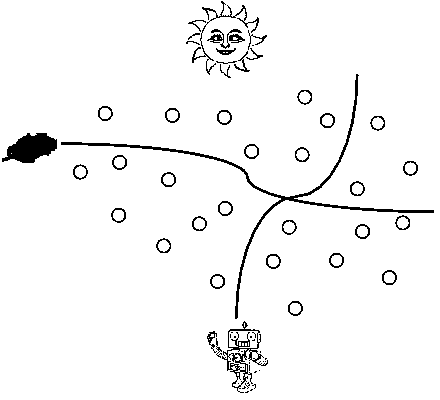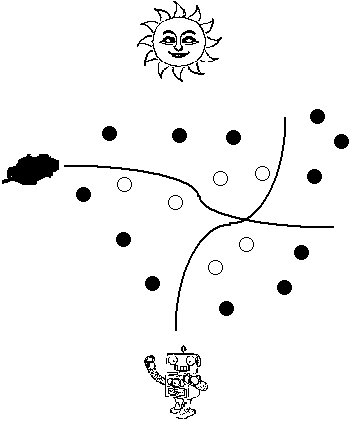Dynamic-target-tracking-oriented sleeping scheduling method for nodes of energy capturing sensor network
A sensor network and energy harvesting technology, applied in the field of sensor networks, can solve the problem of failing to consider the moving direction and speed of the number of targets
- Summary
- Abstract
- Description
- Claims
- Application Information
AI Technical Summary
Problems solved by technology
Method used
Image
Examples
Embodiment Construction
[0012] (1) Many stationary sensor nodes randomly deployed in the planar area form a sensor network, and multiple targets randomly traverse the area from different directions and at different rates. All nodes can draw energy from the outside world, but only when they are in a dormant state. The present invention adopts the disc perception model, and the perception radius of each node is the same. The meaning of target tracking is that there is a set of sensor nodes, and when the target reaches the sensing range of any one of the nodes, the node is already in working state and can detect the target. The present invention does not consider the technology used by nodes to detect targets, and considers that all nodes have the ability to detect targets. The dormancy scheduling is carried out periodically. When the dormancy scheduling starts, the nodes at the boundary of the observation area are all in the working state to wait for the arrival of the target, and other nodes enter th...
PUM
 Login to View More
Login to View More Abstract
Description
Claims
Application Information
 Login to View More
Login to View More - R&D
- Intellectual Property
- Life Sciences
- Materials
- Tech Scout
- Unparalleled Data Quality
- Higher Quality Content
- 60% Fewer Hallucinations
Browse by: Latest US Patents, China's latest patents, Technical Efficacy Thesaurus, Application Domain, Technology Topic, Popular Technical Reports.
© 2025 PatSnap. All rights reserved.Legal|Privacy policy|Modern Slavery Act Transparency Statement|Sitemap|About US| Contact US: help@patsnap.com



